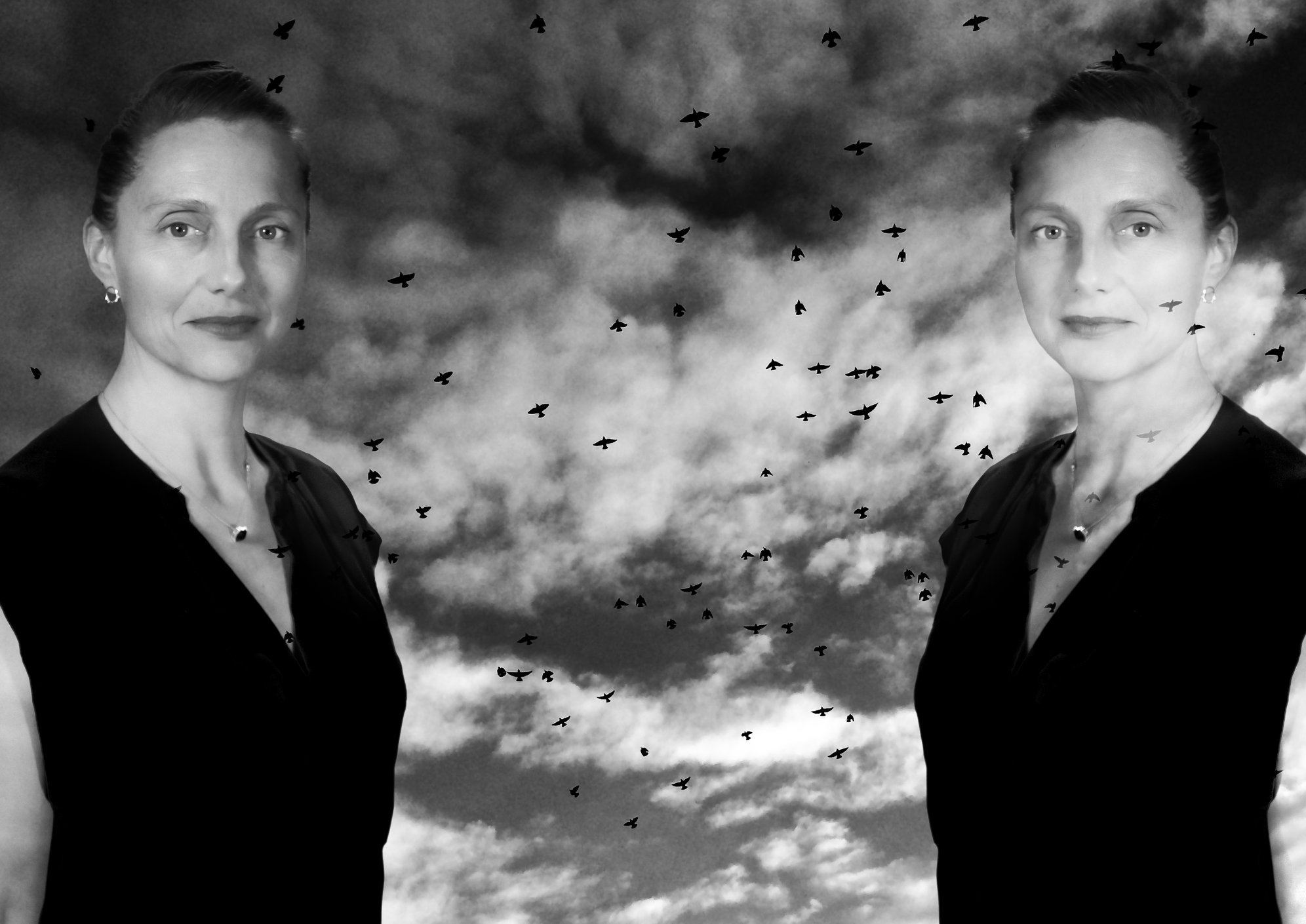
By Steve Sucato
When Groundworks DanceTheater Executive Artistic Director David Shimotakahara had the idea to turn the company’s dance film and stage production of Transcendence into an art installation at Cleveland’s 78th Street Studios he turned to Akron-based filmmaker, artist, and academic Miriam Bennett.
A professor of Media Arts and Filmmaking at Cuyahoga Community College and the owner and director of Moving Studio Productions, Bennett had worked with the company on a past ChoreoLAB project. She has a degree in Italian Baroque Art History from Oberlin College and an Intermedia MFA from the University of Iowa. Her work has been featured in exhibits and screenings in the Tri-C Jazz Fest, The Cleveland Film Festival, The Art Museum of the Americas (Washington, DC), The National Gallery of Victoria (Melbourne, Australia), The Akron Art Museum, and in several US galleries in Cleveland, New York, and Chicago, the Wall Street Journal Speakeasy Arts and Culture, Esquire Magazine Online, Cleveland Scene, Nashville Arts Magazine and Akron’s Devil Strip Magazine. Her documentary films on youth voice, for Scenarios USA films can be seen on Showtime.
I spoke with Bennett about Transcendence: the installation during her creation process.
You have said in your work, you are interested in ‘exploring the dream space of cinema and aspects of our shared reality that we don’t usually like to dwell in.’ Will that be reflected in Transcendence: the installation?
Yes. I have been thinking a lot about the music — composer Olivier Messiaen’s “Quartet for the End of Time” — and how Messiaen was sort of excerpted from reality while he composed it. He literally had the idea for it on a train to [a WWII] prison camp. Time had stopped for him at that moment. Being commissioned to do an iteration of a project that is time-based, I have reflected on the fractured nature and illusion of time.
How will Messiaen’s music be used?
The music is a large part of the experience, its subtext. I think it will direct the mood. You will hear the entire score in movements throughout the installation but not necessarily in order.
How are those ideas about time being visually manifested in the installation?
The idea of stopped time has also permeated my ideas for each movement of the music as I try to transpose the dance, film and music that was previously made into physical space. I find it similar to cutting film in that you are already manipulating time. Additionally, I will be trying to find ways for people that come to see the installation to also exempt themselves from time to connect with the concept or the physical objects and auditory components they encounter.
How will people experience it?
I plan to construct a pathway into the installation that will affect the transition between the outside world and the dream space of the installation. It will be sort of like a series of rooms or spaces with various objects in them and a movement of the music playing in each along with projections of the Transcendence film. I am going to play a lot with scale but keep it simple and accessible.
Will people be able to roam within the installation?
Visitors to the installation do not have to experience it in a linear fashion. They can move back and forth within it. There will be a point of entry and exit, but no rule in how people are supposed to flow through it. I like to let the viewer explore.
Are there other themes contained within the installation?
Yes, the idea of the transition between life to the end of life. It was the theme that inspired David Shimotakahara and the dancers for the dance film version of Transcendence. That is also guiding my thinking for the installation.
How many objects will you be using?
Dozens, possibly hundreds. Chairs, cabinets, crystals, a metronome and much more.
How are you using light in the space?
Bending it and seeing how light and objects intersect as well as using light as a way to transport people.
How willing are you to let go of an idea for the installation if it proves unfeasible?
It depends on how essential the idea is for what I need to see in the space. I am comfortable swimming in an ocean that is always moving around. I do site-specific installation so I am always responding to the space. Work for me is like play, so I don’t really feel I am letting go of things if they disappear. Usually I get to do everything I want to.
What has been the most challenging of your ideas to realize so far?
Figuring out how to get the sound quality I want and source all the electronic components which have to feel natural in the space.
______________________________________________________________________________________________________________
Opening Night Live Performance
Featuring GroundWorks DanceTheater and Miho Hashizume (violin), Keith Robinson (cello), Daniel Gilbert (clarinet) and Donna Lee (piano)
February 10, 2023 | 7:30 p.m.
78th Street Studios | smARTspace
1300 W 78th St, Cleveland
$25
Transcendence: the installation
February 10-24, 2023
78th Street Studios | RAMP East space
1300 W 78th St, Cleveland
FREE ADMISSION
Info/Tickets: groundworksdance.org/transcendence
Photo collage of Miriam Bennett by Ryan Slater.
